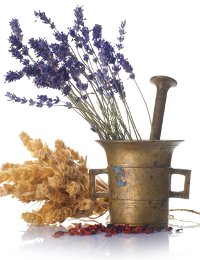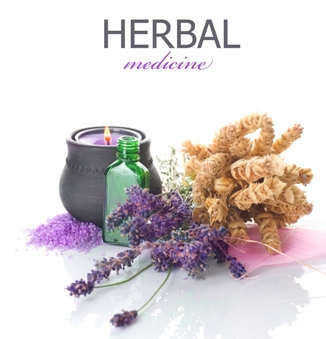An herb is a plant that is valued for flavor, scent, medicinal or other qualities other than its food value. Herbs are used in cooking, as  medicines, and for spiritual purposes. Herbs have a variety of uses including culinary, medicinal, or in some cases even spiritual usage. General usage differs between culinary herbs and medicinal herbs. In medicinal or spiritual use any of the parts of the plant might be considered "herbs", including leaves, roots, flowers, seeds, resin, root bark, inner bark (cambium), berries and sometimes the pericarp or other portions of the plant.
medicines, and for spiritual purposes. Herbs have a variety of uses including culinary, medicinal, or in some cases even spiritual usage. General usage differs between culinary herbs and medicinal herbs. In medicinal or spiritual use any of the parts of the plant might be considered "herbs", including leaves, roots, flowers, seeds, resin, root bark, inner bark (cambium), berries and sometimes the pericarp or other portions of the plant.
Herbs can be traced back into the times of the ancient Egyptians and the ancient Chinese. There are also references in the Bible and medieval documents that show herbs were used by most households. Growing herbs is something that is very beneficial to gardeners for several different purposes. Herbs may be used to flavor food, for potpourri, for tea, for medical purposes or to even control pests in the garden.
Contain powerful stimulating nutrients, which have been used for thousands of years worldwide as a safe and effective means of achieving optimal health. Herbs are derived from leaves, bark, berries, roots, gums, seeds, stems, and flowers of the Botanical Kingdom.
Culinary herbs
Culinary use of the term "herb" typically distinguishes between herbs, from the leafy green parts of a plant, and spices, from other parts of the plant, including seeds, berries, bark, root and fruit. Culinary herbs are distinguished from vegetables in that, like spices, they are used in small amounts and provide flavor rather than substance to food.
Many culinary herbs are perennials such as thyme or lavender, while others are biennials such as parsley or annuals like basil, and some are shrubs (such as rosemary, Rosmarinus officinalis), or trees (such as bay laurel, Laurus nobilis) – this contrasts with botanical herbs, which by definition cannot be woody plants. Some plants are used as both a spice and an herb, such as dill seed and dill weed or coriander seeds and coriander leaves. Also, there are some herbs such as those in the mint family that are used for culinary and medicinal purposes.
Medicinal herbs
Plants contain phytochemicals that have effects on the body. Throughout history, from the Bible, Qur'an, Siddhar poems of Tamils, Vedas and other 
old texts, the medicinal benefits of herbs are quoted.
There may be some effects when consumed in the small levels that typify culinary "spicing", and some herbs are toxic in larger quantities. For instance, some types of herbal extract, such as the extract of St. John's-wort (Hypericum perforatum) or of kava (Piper methysticum) can be used for medical purposes to relieve depression and stress. However, large amounts of these herbs may lead to toxic overload that may involve complications, some of a serious nature, and should be used with caution. One herb-like substance, called Shilajit, may actually help lower blood glucose levels which is especially important for those suffering from diabetes. Herbs have long been used as the basis of traditional Chinese herbal medicine, with usage dating as far back as the first century CE and far before.
Medicinal use of herbs in Western cultures has its roots in the Hippocratic (Greek) elemental healing system, based on a 4-fold elements healing metaphor. Famous herbalist of the Western tradition include Avicenna (Arabian), Galen (Roman), Paracelsus (German Swiss), Culpepper (English) and the botanically inclined Eclectic physicians of 19th century/early 20th century America (John Milton Scudder, Harvey Wickes Felter, John Uri Lloyd). Modern pharmaceuticals had their origins in crude herbal medicines, and to this day, many drugs are still extracted as fractionate/isolate compounds from raw herbs and then purified to meet pharmaceutical standards.
Some herbs are used not only for culinary and medicinal purposes, but also for psychoactive and/or recreational purposes; one such herb is cannabis.
Herbs as food products ingredients
Herbs, such as Irish Moss (Chondus crispus) and Arrowroot (Maranta arundinacea) are used extensively in many common foods found on grocery shelves. Irish Moss is subjected to a rendering-purifying-bleaching process to produce carrageenan that is used as a bulking and thickening agent in dairy products, beverages and many sauces. Arrowroot, with its high starch content, expansive quality when added to water and sticky binding nature, is used extensively in bakery products, especially as a non-gluten ingredient for gluten-free diet needs.
Sacred herbs
Herbs are used in many religions. For example, myrrh (Commiphora myrrha) and frankincense (Boswellia spp) in Christianity, the Nine Herbs Charm in Anglo-Saxon paganism, the neem tree (Azadirachta indica) by the Tamils, holy basil or tulsi (Ocimum tenuiflorum) in Hinduism, and many Rastafarians consider cannabis (Cannabis sp) to be a holy plant. Siberian Shamans also used herbs for spiritual purposes. Plants may be used to induce spiritual experiences for rites of passage, such as vision quests in some Native American cultures. The Cherokee Native Americans use white sage and cedar for spiritual cleansing and smudging.
Using Herbs Safely
* Never exceed the manufacturer's recommended dose.
* Stop taking your herbal medicine if you suffer side-effects.
* Always seek professional advice if your symptoms persist.
* Do not take herbal medicines in pregnancy or when breast feeding, unless their safety has been established.
* If you are taking conventional medicine, or have any long-term medical condition, check with your doctor before taking a herbal medicine or supplement.
![]()
Disclaimer: This website is for information purposes only. By providing the information contained herein we are not diagnosing, treating, curing, mitigating, or preventing any type of disease or medical condition. Before beginning any type of natural, integrative or conventional treatment regime, it is advisible to seek the advice of a licensed healthcare professional.



















